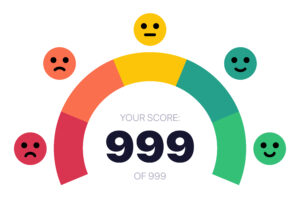Is Usage-Based Car Insurance Right for You?
Driver-style personalized insurance can help you a lot, but is it really worth it financially? Check out an analysis.
the United States, the auto insurance market is evolving rapidly, and one of the most significant trends is the adoption of Usage-Based Insurance (UBI).
This innovative model allows drivers to pay for their policies based on their driving habits, making pricing fairer and more personalized.

Here’s what you need to know about this model.
What Is Usage-Based Insurance (UBI)?
Usage-Based Insurance is a type of auto insurance where the amount paid by the policyholder is determined by their driving behavior rather than just traditional factors.
This means it doesn’t rely solely on age, credit history, and location.
Insurance companies use technologies such as telematics, mobile apps, and devices installed in vehicles to collect data and assess driving patterns.
The key factors analyzed include:
- Miles driven—Drivers who drive less tend to pay lower premiums.
- Time of driving—Driving during lower-risk hours can reduce costs.
- Speed and acceleration—Excessive speeding and sudden accelerations may increase the policy cost.
- Harsh braking—Indicates a more aggressive driving style.
- Phone usage while driving—Some insurers monitor distracted driving.
Based on these factors, insurers offer discounts and adjust rates according to the driver’s behavior.
How Does UBI Work in Practice?
Typically, UBI programs operate in different ways:
- Pay-As-You-Drive (PAYD): The insurance cost is based on the number of miles driven. Drivers who drive fewer miles pay less.
- Pay-How-You-Drive (PHYD): Evaluates driving habits, such as speed, hard braking, and driving hours, to determine the rate.
- Manage-How-You-Drive (MHYD): Provides real-time feedback and tips to improve driving habits.
Benefits of Usage-Based Insurance
This type of insurance offers important advantages, including:
- Lower Insurance Costs
Careful drivers can earn significant discounts, reducing their insurance expenses compared to traditional policies.
If you drive less or more cautiously, you may pay much less than a fixed rate based on general statistics. - Encourages Safer Driving
Knowing that their driving is being monitored, many drivers adopt more responsible habits. This can help reduce accidents and improve road safety. - Personalized Coverage
With UBI, you pay for what you actually use. Instead of being classified based on a demographic group, your profile is adjusted to your individual driving characteristics. - Transparency and Feedback
Many insurers offer apps and reports that allow drivers to view their driving data, understand how they can improve, and track potential increases or reductions in their insurance costs.
Disadvantages of Usage-Based Insurance
Despite the benefits, UBI also has some drawbacks that should be considered before opting for this model:
- Continuous Monitoring
To calculate pricing, insurers need constant access to driving data. This raises concerns about privacy and the use of personal information. - Higher Costs for Long-Distance Drivers
People who drive long distances daily may not benefit from UBI, as costs could be higher than those of a traditional policy. - Price Variability
The insurance rate may fluctuate over time depending on driving behavior.
A month with more trips or less careful driving habits could result in a higher premium, making financial planning more difficult.
Who Should Consider UBI?
Usage-Based Insurance can be a great option for several types of drivers:
- Low-mileage drivers: If you use your car only occasionally, you could save a lot.
- Safe drivers: Those with cautious driving habits can benefit from lower premiums.
- Young drivers: Young drivers usually face high insurance premiums, but with UBI, they can prove they are responsible and get better rates.
- Remote workers: People who work from home and don’t drive frequently may pay less due to reduced mileage.
Leading Insurance Companies Offering UBI in the U.S.
Several insurance companies have already adopted the usage-based insurance model in the United States. Some of the top providers include:
- Progressive (Snapshot)
- State Farm (Drive Safe & Save)
- Allstate (Drivewise)
- GEICO (DriveEasy)
- Nationwide (SmartRide)
The Future of Usage-Based Insurance
With advancements in connected vehicle technology and artificial intelligence, the insurance market is becoming increasingly digital and personalized.
Usage-Based Insurance is expected to grow even further, with insurers investing in predictive analytics and big data to offer policies increasingly tailored to each driver’s profile.





